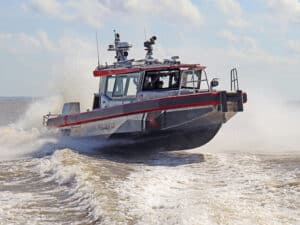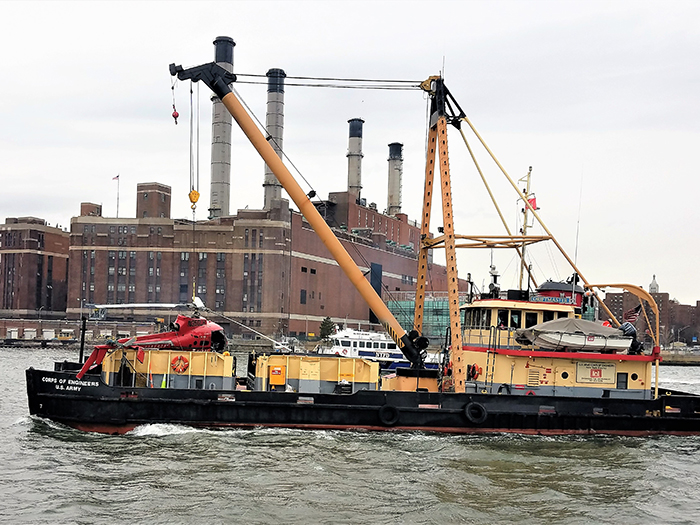
USACE tenders for diesel-electric hybrid drift collection vessel
Written by Nick Blenkey
Vessel will replace current DCV Driftmaster [Image: USACE]
The Philadelphia Engineer District intends to procure a new diesel-electric hybrid vessel for the New York District of the U.S. Army Corps of Engineers. The new vessel will be used by the district in support of its drift collection and emergency response missions. It will replace current the DCV Driftmaster, which is used in the New York and New Jersey harbor to removes debris and obstructions from high use navigation channels to provide clear and safe channels for general navigation and to ensure that life and property is protected.
Like the Driftmaster, the replacement vessel will have a catamaran hull design enabling it to effectively trap floating debris between its hulls.
The diesel-electric hybrid vessel will have a 3.4 MWh Energy Storage System (ESS) providing six hours endurance to a combined all-electric 3,000 hp main propulsion system utilizing permanent magnet motors and two 150 hp bow thrusters. The vessel is supplemented by four Cummins diesel generator sets driving permanent magnet generators yielding a 50% reduction in emissions during operation. The systems have been designed and will be built to meet all American Bureau of Shipping (ABS) and United States Coast Guard regulatory requirements.
The naval architecture was provided by the Bristol Harbor Group Inc. with the vessel having the following principal characteristics:
Length Overall:148 feet
Beam Overall: 39 feet
Molded Depth at Midship: 15 feet 6 inches
Design Draft: 8 feet 6 inches
As part of the design efforts the USACE operational scenarios were evaluated with advanced simulation tools at the Ockerman Automation Consulting, Inc. (OAC) Marine Electric Propulsion Simulation (MEPS) laboratory located in Newport News, Va.
This advanced research and development effort provided key data to the USACE to validate its program requirements. The MEPS laboratory facility also permitted OAC to validate their proposed hybrid propulsion system solution to ensure proper performance and safety requirements would be achieved.
According to John Ockerman, OAC’s CEO: “The MEPS laboratory and these programs are instrumental toward advancing reliable and safe high-performance energy storage solutions for hybrid and electric propulsion technologies for naval and commercial applications.”
In addition, the MEPS laboratory contributed to program efficiencies by hosting program design reviews utilizing its Augmented/Virtual Reality (AR/VR) department to address human factors associated with bridge layout, control room layout helm design and machinery arrangement within the virtual vessel.
It will also be providing conditioned based monitoring services from the laboratory after launch of the vessel by the shipyard.
The shipyard phase is currently out for tender by the USACE Marine Design Center under solicitation number W912BU20B0014. You can access the details HERE.




